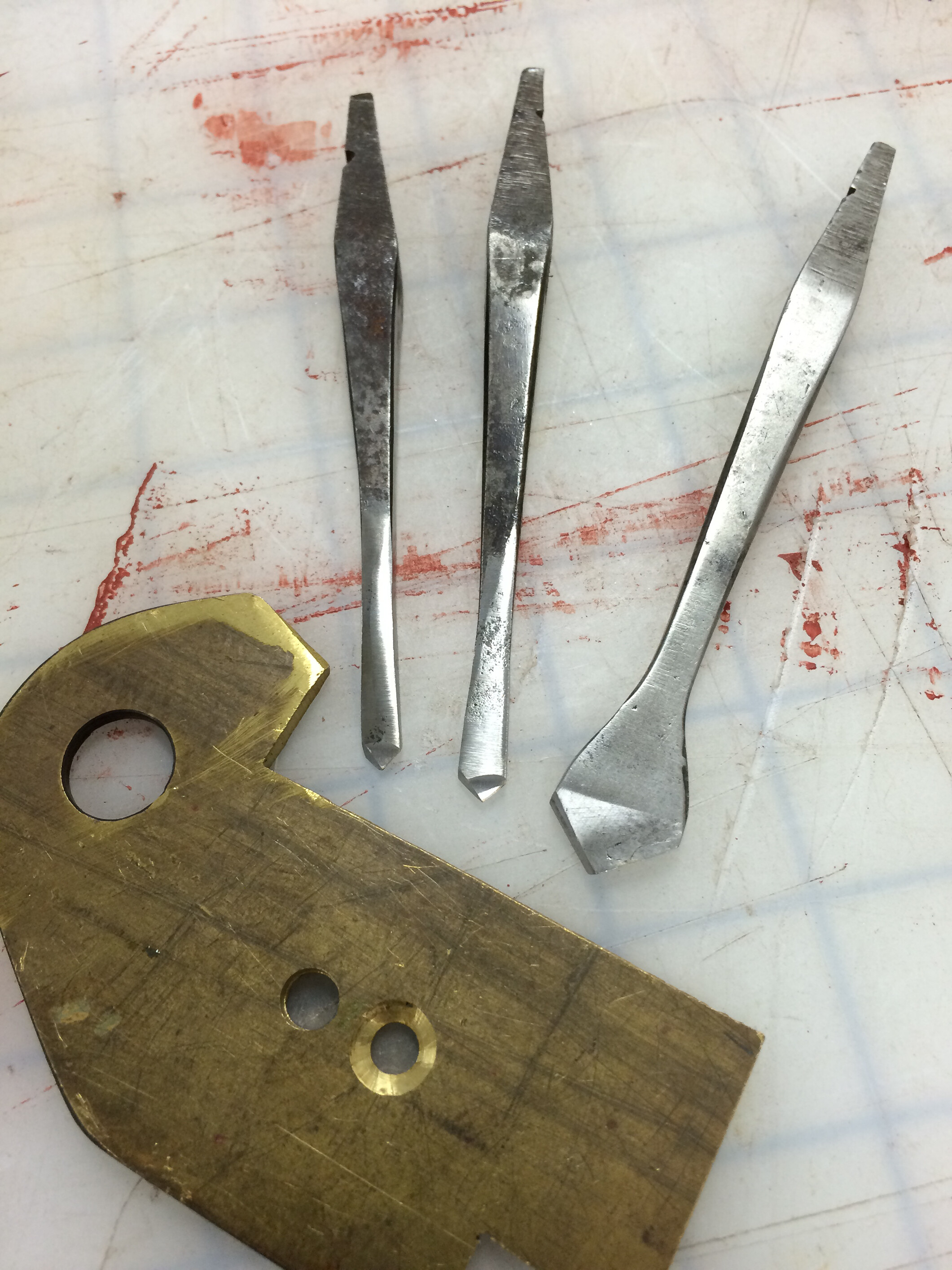 Below are a couple of metal cutting drill bits for a brace, and the holes they bored in a 1/8″ thick brass plate. Also shown is an 18th century style countersink. I ground and sharpened the drill bits to form approximately 3/16″ and 1/4″ holes. The countersunk hole fits a #10 tang screw.
Below are a couple of metal cutting drill bits for a brace, and the holes they bored in a 1/8″ thick brass plate. Also shown is an 18th century style countersink. I ground and sharpened the drill bits to form approximately 3/16″ and 1/4″ holes. The countersunk hole fits a #10 tang screw.

Sharpened as above, the bits and countersink shown, cut out big thick chips of brass,just like it was cutting wax. It didn’t take more than two minutes each to drill those holes. I rarely have anything thicker than about 1/8″ to drill. About the only thing thicker, would be the lock nail hole through the lock bolster, at about 1/4.” A fine grain wrought iron lock plate isn’t much harder than brass.
I plan to make three tap drills for the internal lock screws, the lock nails, and the top jaw screw. The 3/16″ bit and countersink shown will handle all the clear holes.
